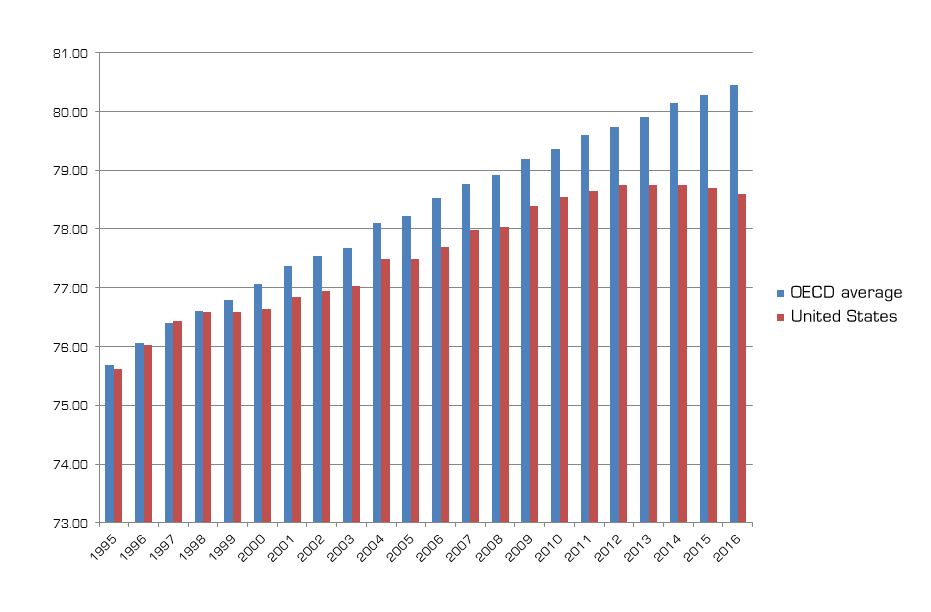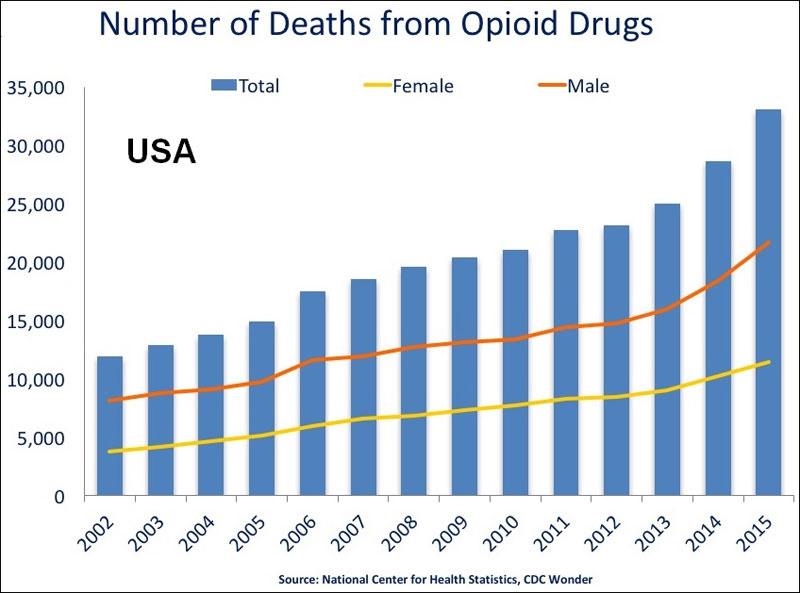
8th February 2018 Alarming drop in US life expectancy Suicide and drug/alcohol use is lowering the average lifespan of Americans, continuing a general decline.
Drugs, alcohol and suicides are contributing to an alarming drop in US life expectancy, particularly among middle-aged white Americans and those living in rural communities, warn experts this week in peer-reviewed medical journal, The BMJ. Steven Woolf at Virginia Commonwealth University and Laudan Aron at the Urban Institute in Washington DC, argue that the ideal of the "American Dream" is increasingly out of reach as social mobility declines, and fewer children face a better future than their parents. US life expectancy has decreased for the second year in a row, they explain. This is alarming, because life expectancy has consistently increased for much of the past century in advanced countries, including the US. In 1960, for example, Americans had the world's highest life expectancy – 2.4 years longer than the average for countries in the Organisation for Economic Cooperation and Development (OECD). But the US started losing ground in the 1980s, fell below the OECD average in 1998, plateaued in 2012, and is now 1.5 years shorter than the OECD average. A 2013 report found that Americans have poorer health in many areas, including birth outcomes, injuries, homicides, adolescent pregnancy, HIV/AIDS, obesity, diabetes and heart disease. They also engage more in unhealthy behaviours (such as high calorie intake, drug abuse, and firearm ownership), live in cities designed for cars rather than pedestrians or cyclists, have weaker social welfare supports and lack universal health coverage. The report also found high US death rates from drugs. Between 2000 and 2014, the rate of fatal drug overdoses increased by 137%, a crisis fuelled by the growing use of highly addictive opioid drugs. And in 2015 alone, more than 64,000 Americans died from drug overdoses, devastating families and the social fabric of communities. US death rates from alcohol abuse and suicides have also been increasing, say the authors. Between 1999 and 2014, the suicide rate increased by 24%, disproportionately impacting white Americans aged 25-59 years, those with limited education, and women. The sharpest increases are occurring in rural counties, often with longstanding social and economic challenges.
Why white Americans are dying at higher rates from drugs, alcohol, and suicides is unclear, complex, and not explained by opioids alone, say the authors. Possibilities include the collapse of industries and the local economies they supported, the erosion of social cohesion and greater social isolation, economic hardship, and distress over losing the stability their parents once enjoyed. The US is rich, but this wealth is not inclusive, the authors write. Its social compact is weaker than in other countries – those in need have less access to social services, healthcare, or the prevention and treatment of mental illness and addiction. In theory, policymakers would be keen to correct these conditions by promoting education, supporting struggling families and communities, and strengthening healthcare systems. Instead, the authors say, recent legislation and regulations may even prolong or intensify the economic burden on the middle class and weaken access to healthcare and safety net programs. "The consequences of these choices are dire: not only more deaths and illness, but also escalating healthcare costs, a sicker workforce, and a less competitive economy," they conclude. "Future generations may pay the greatest price."
Comments »
If you enjoyed this article, please consider sharing it:
|









